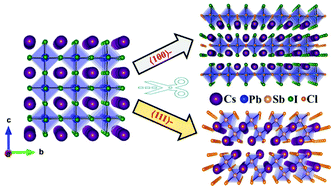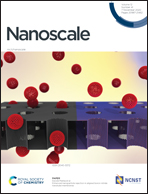2D layered all-inorganic halide perovskites: recent trends in their structure, synthesis and properties
Abstract
Recently, halide perovskites have appeared as a superior class of materials for diverse applications, mainly in optoelectronics and photovoltaics. Perovskite halides are broadly classified as hybrid organic–inorganic and all-inorganic analogues depending on the chemical nature of the A cation in the ABX3-type structure. Immense progress has already been achieved in halide perovskites focusing mainly on the hybrid equivalents and all-inorganic three-dimensional (3D) structures, however all-inorganic two-dimensional (2D) layered halide perovskites are relatively new and their nanostructures have gained significant attention in the last few years. In this minireview, we presented a discussion on the recently developed all-inorganic 2D layered halide perovskites highlighting their crystal structure, synthetic methodologies, chemical transformations, and optical properties. We have demonstrated a significant number of examples of Pb-free 2D halide perovskite nanostructures. Strategies for the shape-controlled synthesis of nanostructures and their excitonic properties are discussed in detail. Thermal conductivity and thermoelectric properties are emphasized along with the magnetic properties of layered transition-metal based perovskites. We have also mentioned the recent examples of all-inorganic 2D halide perovskites as photocatalysts for solar-driven CO2 reduction. Finally, we have concluded the article with an outlook for the further progress in 2D all-inorganic halide perovskites toward the structural diversity and prospective new applications.

- This article is part of the themed collections: Editor’s Choice: Thermoelectric nanostructures and Recent Review Articles


 Please wait while we load your content...
Please wait while we load your content...